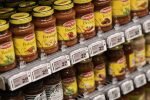What it Means for Retail and Foodservice Coffee Brands

History of the US coffee waves
The US coffee market has experienced distinct waves separated by shifts in consumer attitudes and market dynamics along with technological innovations.
First wave – coffee as an accessible commodity. Approximate wave start date: late 1800s. Characteristics: Innovation in packaging, transportation and brewing technologies made coffee an accessible, affordable beverage for the average American consumer.
Second wave – rise of the coffee shop chain. Approximate wave start date: late 1980s/early 1990s. Characteristics: Defined by the rise of the coffee shop. Specialty coffee drinks such as lattes and cappuccinos took hold among young adults. Demand for higher-quality coffee increased and attributes such as location of origin began appearing on coffee packaging.
Third wave – coffee goes craft. Approximate wave start date: late 2000s/early 2010s. Characteristics: A hyper-focus on craft and quality primarily driven by coffee shops. Third-wave coffee shops utilize premium-brewing techniques (eg pour-over) and provide detailed sourcing information (such as specific location of origin) and detailed tasting notes. Most third-wave shops eschew the highly flavored drinks found at many second-wave coffee shops (eg s’mores latte) in favor of drinks that celebrate coffee’s natural flavor.
Fourth wave coffee – cool brews, bottom up innovation, and a new approach to coffee marketing
The coffee market is now entering its fourth wave, marked by Gen Z’s unique coffee preferences and the growth of at home specialty coffee drinks. Fourth wave coffee will be characterized by the following:
Premium home-crafted coffee drinks. While coffee shops defined second and third wave coffee, fourth wave coffee innovation will center on the home. Many consumers upgraded their home coffee bars during the pandemic in response to the closure of coffee shops and mandated WFH (work-from-home) policies. Mintel research shows that 33% of remote workers own a single-cup specialty coffee brewer (eg Nespresso) compared to 27% of non-remote workers; 20% of remote workers own a pour-over coffee set compared to 9% of non-remote workers. Ownership of specialty brewing equipment along with the decline of commutes (due to increase in remote work) will empower consumers to craft their own specialty coffee drinks at home, indicating opportunities for retail coffee brands as well as complementary categories such as coffee additives (eg creamers, flavored syrups) and coffee appliances. For example, design-forward coffee appliance brand Fellow raised $30 million in its Series B in June 2022, signaling market opportunities for premium coffee appliances.

Source: Fellow
TikTok shapes coffee culture. TikTok content creators, rather than coffee shops, will dictate future coffee trends and influence US coffee culture. “Coffeetok” influencers regularly share their coffee drink recipes, coffee rituals, brewing techniques and display their curated coffee bars to a large audience of consumers, many of whom attempt to replicate the drinks they see on their FYP (For You Page). According to Mintel research, 49% of Gen Z consumers learn about coffee and coffee topics (eg new drinks, brewing tips) on TikTok. This “bottom-up” nature of fourth-wave coffee (trends set from individual content creators rather than established coffee shops) will challenge coffee shops as influencers primarily share recipes for consumers to follow at home; rising inflation will only increase consumers’ demand for home-sourced coffee drinks.

Source: TikTok
Cold coffee drink innovation. The future of coffee is cold; 65% of Gen Z consumers ordered a cold coffee drink from a foodservice location in the past three months compared to 33% who ordered a hot coffee drink. Fourth wave coffee drink innovation will primarily revolve around cold coffee beverages. Expect to see an increase in new at home cold coffee drink recipes, new textured cold coffee drinks (eg a redux of the sparkling coffee trend), new cold coffee brewing techniques (eg flash brewed), and Ready-To-Drink coffee innovation (particularly the rise of functional RTD coffees).
Third wave backlash and outsider brands. Third-wave coffee’s focus on quality was, in part, a backlash to the highly flavored, commercialized drinks synonymous with second-wave coffee. Fourth-wave coffee may represent a backlash to the overly craft (borderline pretentious) nature of third-wave coffee. Quality will certainly remain important to consumers, and coffee enthusiasts will still treat themselves to pour-over coffee. However, expect to see more brands take a less serious approach to coffee.
While third-wave coffee was rooted in craft and exclusivity, fourth-wave coffee will include “outsider” brands (eg founded by those outside the traditional coffee industry) that often take an identity-based approach to coffee marketing. Examples of outsider brands include: Big Face Coffee (founded by NBA star Jimmy Butler); Black Rifle Coffee Co (one of the fastest growing coffee brands known for its military and gun-themed brews); and Chamberlain Coffee(founded by YouTube star Emma Chamberlain).
What fourth wave coffee means for retail and foodservice
Retail: Increased interest in premium at home coffee experiences will drive retail coffee sales and offer both coffee brands and complementary coffee categories key growth opportunities. Retail coffee brands must respond to coffee-related topics that percolate across social media and release products that allow consumers to replicate online trending coffee drinks.
Foodservice: While foodservice will still play a major role shaping coffee culture, TikTok will have a greater influence on consumers’ coffee preferences and behaviors and more consumers will seek to replicate trending drinks at home. Coffee shops must therefore prioritize innovation and act as the market trendsetters. At the same time, chains must keep a finger on the pulse of what coffee drinks/topics are growing across social media and be quick to capitalize on any emerging coffee trends.



